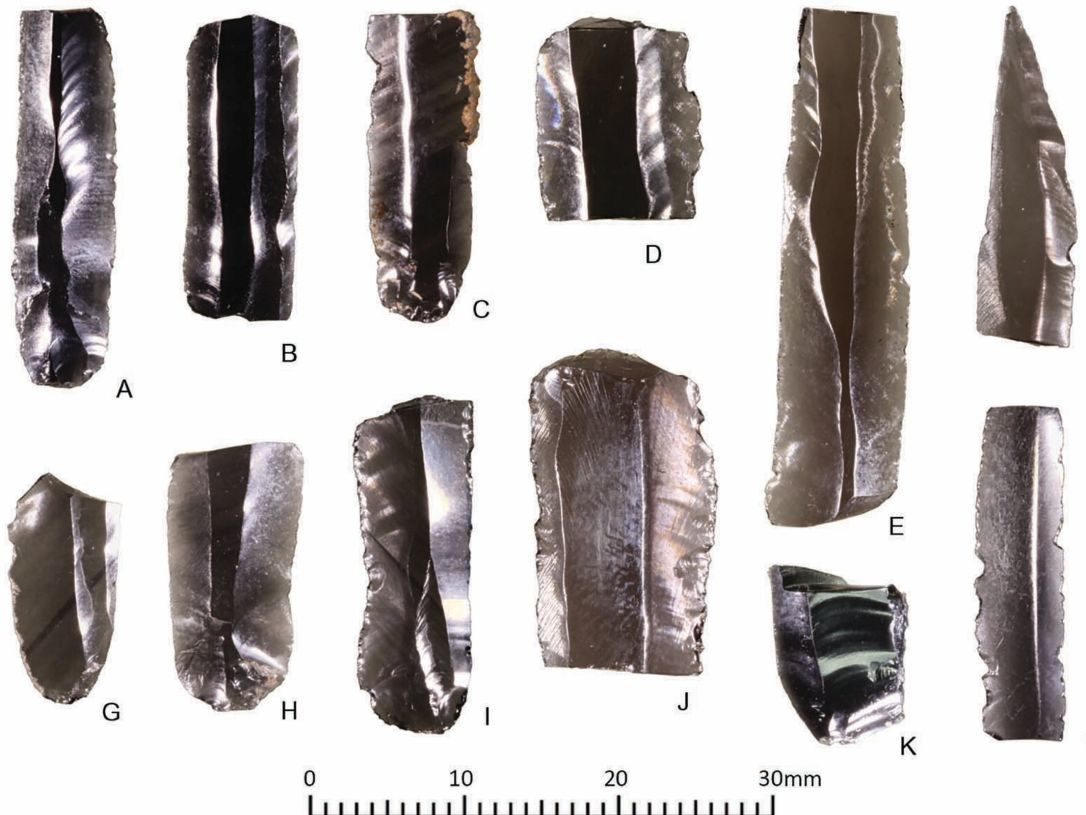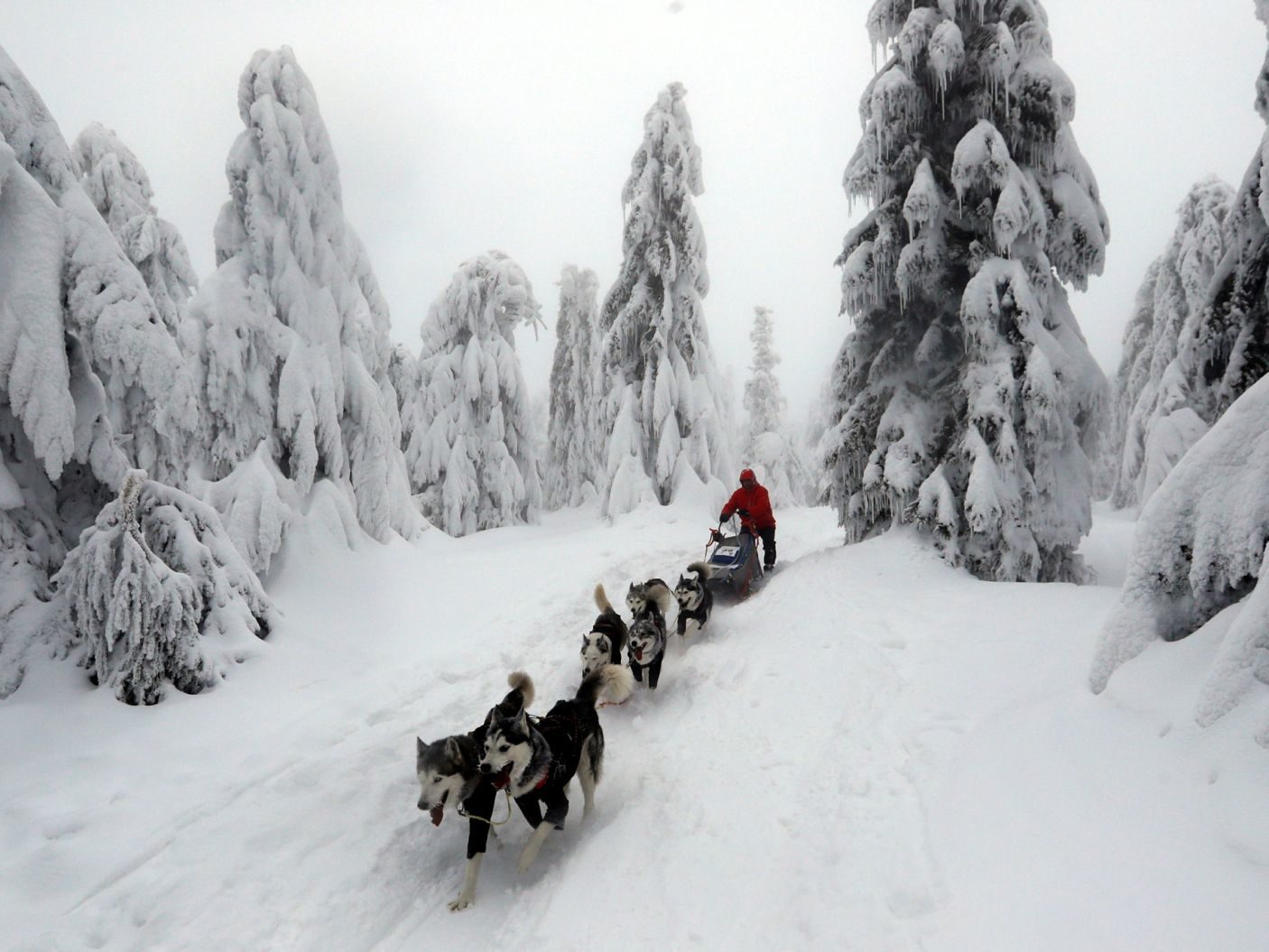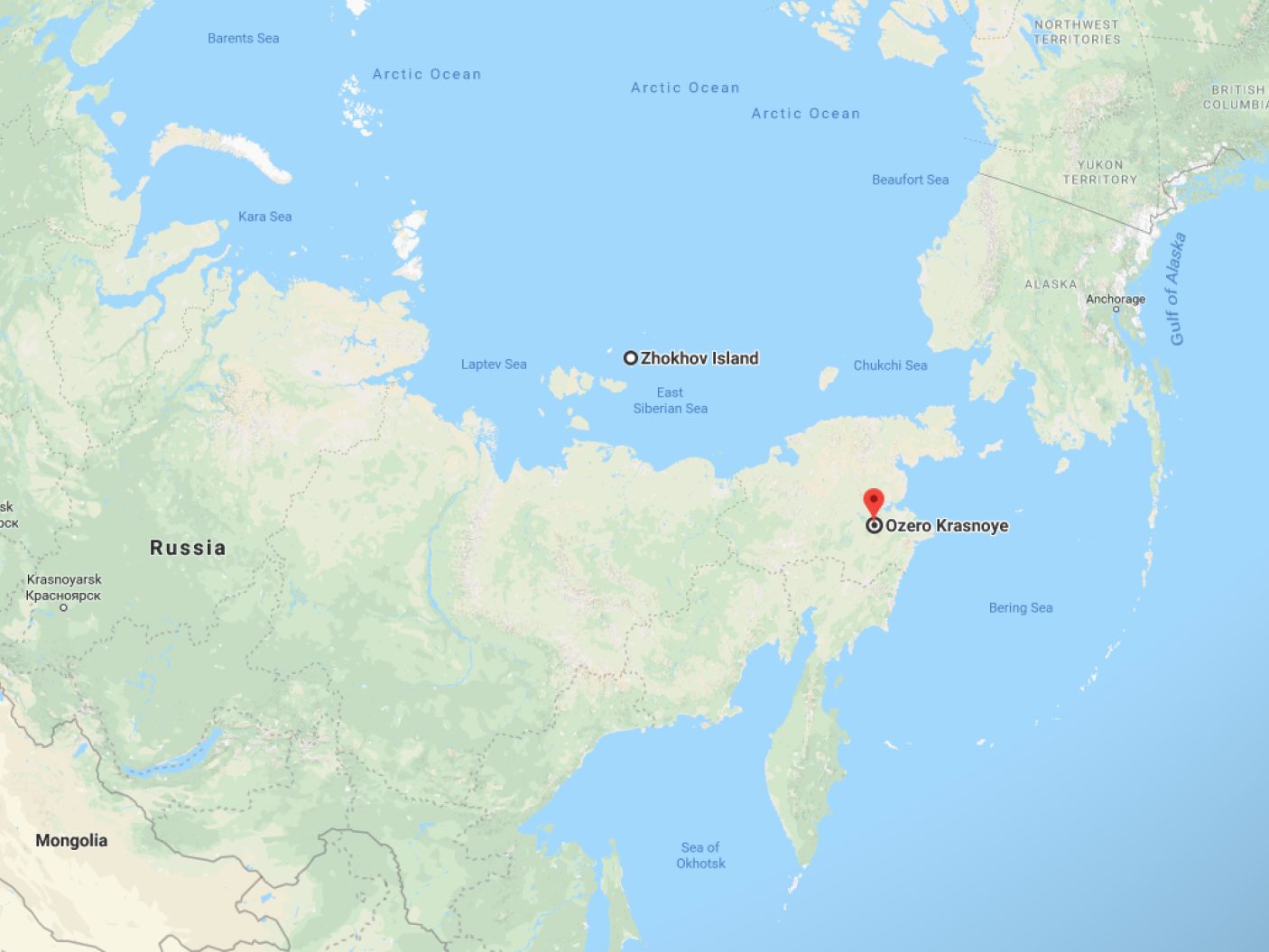
Prehistoric Siberians living on an island in the Arctic Circle around 8,000 to 9,000 years ago possessed obsidian tools that hailed from 1,500 kilometers (932 miles) away, Russian archaeologists reported in the journal Antiquity last week.
To people living on icy Zhokhov Island, the closest known source of obsidian - a shiny glassine volcanic rock that shatters to create extremely sharp blades - is near Lake Krasnoye in the lower reaches of the Anadyr River in Chukotka.
Krasnoye is 1,500 kilometers as the bird flies from Zhokhov. As the sled dog trudges, it's more like 2,000 kilometers, the team headed by Vladimir Pitulko of the Russian Academy of Sciences reports.

Taming big dogs in the Arctic Circle
The Mesolithic Zhokhov Islanders were the northernmost prehistoric community found to date. They belonged, it seems, to the paleo-Arctic Sumnagin cultural complex, which was characterized by hunting and fishing.
Excavations at Zhokhov began in the early 1990s. So far, archaeologists have found over 19,000 stone tools and three times as many remains of animals there, as well as hundreds of artifacts made of antler, mammoth ivory and bone, and about 1,000 artifacts made of wood.
Most of their stone tools were, predictably, made of local sedimental rock called chert. Tools made of the glossy black obsidian, and colorful chalcedony, were a rarity: about 0.5 percent of the stone tools were made of obsidian, the team reports.

The obsidian blades reported in this latest study had been found earlier, starting in 1989, but advanced analysis done recently has shed new light on unexpected mobility in these prehistoric, pre-wheel people who lived in reindeer skin tents, it seems.
The sharp of eye will see Zhokhov Island is an island among the De Long Islands. But in the Mesolithic Stone Age, it had been connected by land to mainland Siberia, before the seas rose as the Ice Age waned. That bridge now forms part of the shelf of the East Siberian Sea.
We have no indication as to whether the prehistoric Siberians traveled thousands of kilometers and brought the obsidian back; if people living 1,500 kilometers or more away came to Zhokhov (which seems unlikely), or if they met in the middle somewhere. Since prehistoric Siberians didn't fly and the team from the Akson Russian Science Communication Association doesn't think they could travel so far back then, nor could anybody else, they feel quite confident that the importer and exporter met somewhere in the middle - possibly traveling not on foot but by dogsled.
The when and where of dog domestication is one of the great mysteries. Israeli archaeologists found a woman buried with a puppy dating to 14,000 years ago. But a 2017 paper by the same team headed by Pitulko postulates that the earliest evidence of dog breeding for human exploitation took place on this same Zhokhov island 500 kilometers north of mainland Russia, among this 9,000-year-old prehistoric population.
In 2017, Pitulko and the team found the remains of smaller dogs that would have been appropriate to pull sleds (around 25 kilograms, or 55 pounds, in weight, like sled dogs today) and bigger dogs up to 50 kilos in weight, that they seem to have utilized to hunt polar bears and reindeer. The excavators also found evidence of ancient wooden sleds.
It bears adding that the ancient Zhokovians may not have been deliberately breeding per se, but realized what size pooch was appropriate to pull a sled without overheating, and which size was better to hunt the bear. Also, possibly the dog's role in society may have developed in more than one place - Asia, Europe and the Arctic Circle. Zhokhov is famously the site of the farthest-flung prehistoric population known so far.
However it happened, the archaeologists believe the glass-rock shows the existence of a "super-long-distance" barter network in the Mesolithic.
"It is unlikely that the inhabitants of the Zhokhov site procured obsidian directly from the Lake Krasnoye source," the author wrote, adding that the hypothetical maximum direct supply zone for resources is around 300 kilometers. "The obsidian is therefore most likely to have been acquired through exchange," they add.
However the trade happened, it wasn't on horseback. The horse wouldn't be domesticated for several thousand more years.

Another aspect possibly supporting the meet-in-the-middle hypothesis for the obsidian trade is that Zhokhov was not prime prehistoric real estate: The settlement that existed 8,600 to 9,300 years ago may not have been cut off by sea yet, but had only between 25 to 50 permanent residents, the archaeologists estimate.
That begs the thought that one reason they traveled was to find companionship, unknowingly strengthening their legacy by avoiding inbreeding despite their relative isolation. "The results of our research indicate a high level of sociocultural relations that existed among the ancient population of the Arctic in Eastern Siberia 9,000 years ago," Pitulko says.
That in and of itself supports another theory, that the Arctic had been settled much earlier than once supposed.
Zhokhov Island has the earliest known settlement by humans that far north, though the peopling of the Arctic realms in prehistory remains highly enigmatic, as Pitulko has said before.
If once archaeologists thought people only settled the high north after the glaciation began to recede, evidence accruing in recent years has thrown that back a very long way: to around 46,000 years. That is the date that somebody stabbed a wolf with a spear, Pitulko told the Russian journal Arctic in 2016; a slaughtered mammoth also dates to about that time. (Of course, the prehistoric aggressor might not have been Homo sapiens
Moving on: by eight to nine thousand years after the sled dogs or shank's mare took the prehistoric people of Zhokhov to seek out the rest of the world, for sharp stone blades, brides or whatever, the far-northern Siberians launched trade fairs. But it's possible the fairs could have begun back then, before the island was cut off from the mainland by the rising seas.





Guess this Canadian is an incarnate